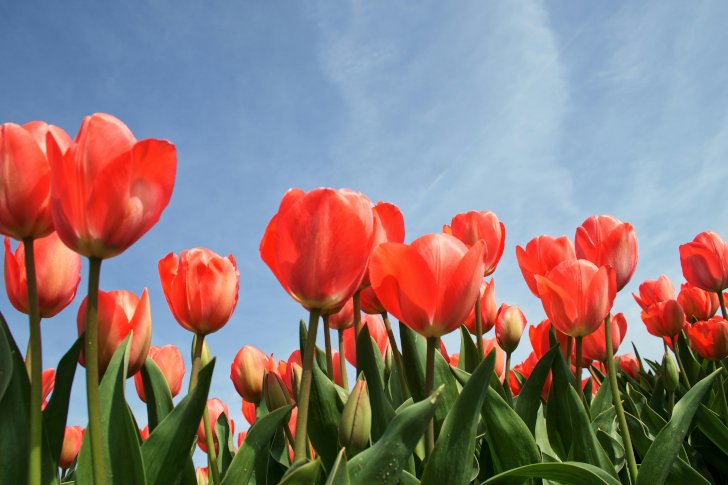The Republic of Kalmykia is known as the only predominantly Buddhist region in Europe, the home of the saiga antelope, which is the only extant antelope species in Europe, and for its vast tulip fields. Kalmykia is one of the regions where Schrenk’s tulip, widely considered to be the ancestor of the garden tulip, grows in the wild. Schrenk’s tulip is a protected species in Russia, and the tulip fields of Kalmykia are therefore protected areas.
By the end of the 20th century, the population of wild tulips in Kalmykia had greatly decreased. Tulip fields were plowed and used for grazing, plus a lot of peoples picked the flowers and sold them illegally. Appeals to law enforcement to protect the tulips had no effect, so it was decided to protect the tulip fields through education and awareness.
In the 1990s, the government of Kalmykia came up with the idea of organizing an educational event that would create conditions under which the protection of flowers and tulip steppes would become understandable and economically profitable for local residents, and tourists would get the opportunity to enjoy the unique nature of Kalmykia without harming it.
The inaugural event dedicated to the beginning of the tulip blooming season in Kalmykia was held in 1996 under the name “Hymn to the Tulip”. The annual Kalmyk Tulip Festival has been organized since 2013. The main goals of the festival are to popularize and protect Kalmyk tulips, raise awareness of the threatened status of Schrenk’s tulip, and celebrate the wildlife and national culture of Kalmykia.
The main organizer of the festival is the Ministry of Culture and Tourism of Kalmykia. The festival is usually held in mid- to late April and can last from several days to several weeks, depending on the weather. The 2019 festival, for example, was cut short due to severe ground frost. The location of the festival changes every year in order to preserve tulip fields by letting them “rest” in between festivals. Visitors can take a stroll through a tulip field and take photos, but picking flowers is strictly prohibited.
The Kalmyk Tulip Festival offers visitors a rich and diverse program of events focused on Kalmyk culture: arts and crafts, traditional song and dance, sports, etc. It includes concerts, film screenings, various contests and competitions, exhibitions, historical reenactments, and more. Visitors have the opportunity to listen to Kalmyk throat singing, sample traditional Kalmyk foods such as boortsog and buuz, take a horse or camel ride, and buy traditional crafts at the festival fair.
During the festival, many attendees also visit Kalmykia’s major tourist attractions such as the Seven Days Pagoda, the Burkhan Bakshin Altan Sume (Golden Abode of the Buddha Sakyamuni), the lone poplar with a cascade of springs, Geden Sheddup Choikorling Monastery, the Buddha Maitreya Statue, and the Golden Gate in Elista.





